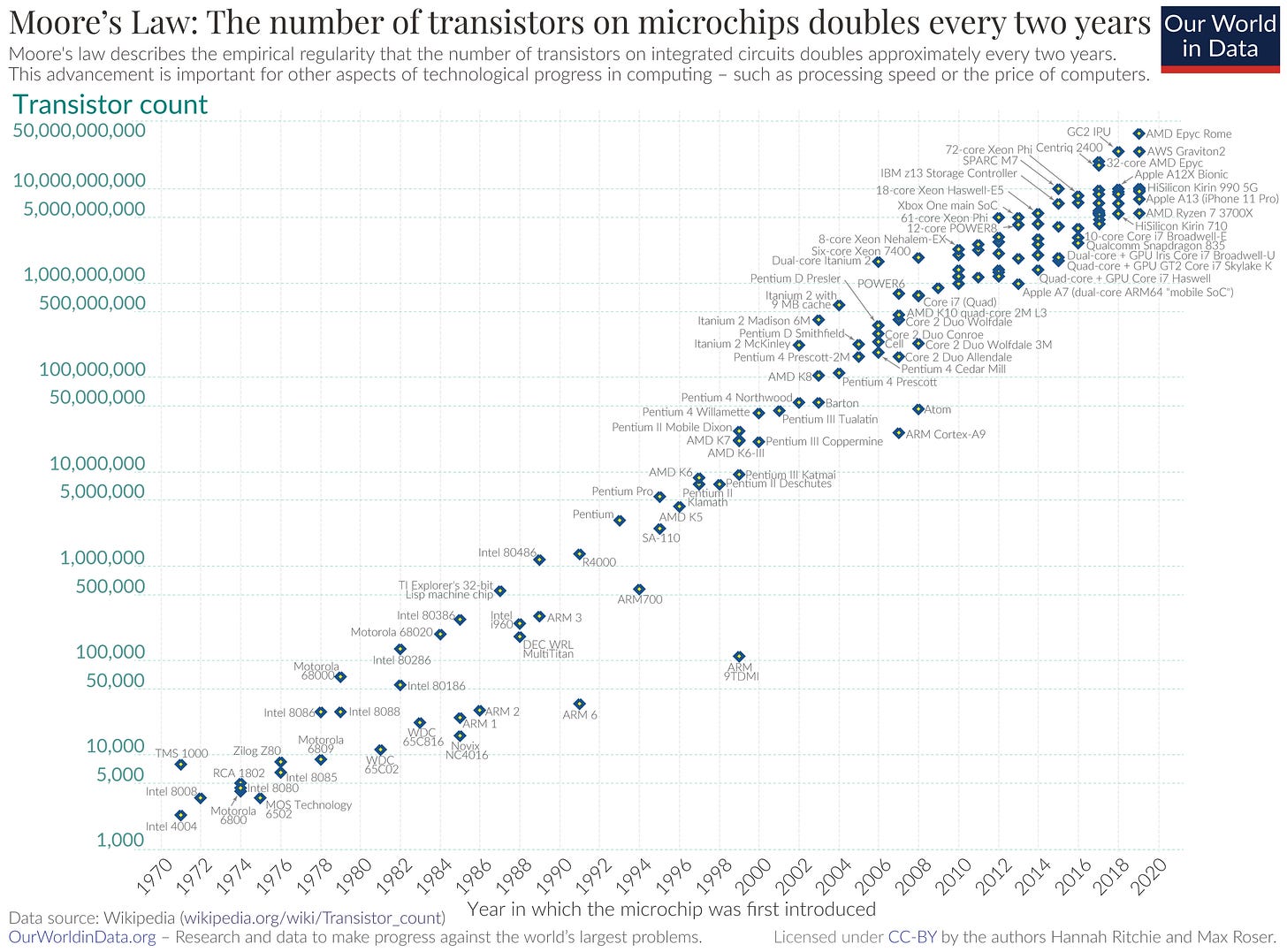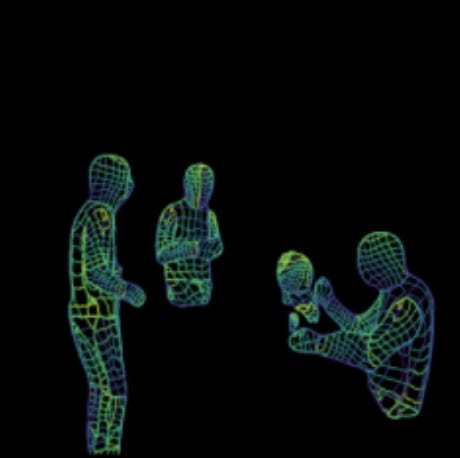Nearly one hundred years ago, in 1928, IBM developed the punch card—a stiff piece of card stock measuring 7 3/8 by 3 1/4 inches with 80 columns and 12 rows, creating 960 bits of data storage capacity. These holes represented binary data through the presence or absence of holes punched in specific positions.

Data was input by operators using keypunch machines that functioned like typewriters but created holes instead of letters. A skilled operator could generate about 96,000 bits per hour. By comparison, a single minute of 4K video recording today generates approximately 375 megabytes—equivalent to what would have taken a punch card operator over 30 years to create.

The punch card perfectly captures what Nicholas Negroponte described in his 1995 book Being Digital—the transition from a world based on atoms to one based on bits. The paper card represented the old atomic paradigm we could touch and smell, while its cryptic holes signaled the dawn of machine-processable information.
The First Wave: Moving Information Faster
When Being Digital was published, digitization's most obvious impact was disrupting businesses by replacing analog systems with digital ones. Negroponte accurately predicted video rental stores would disappear first, writing: "The first entertainment atoms to be displaced and become bits will be those of videocassettes in the rental business, where consumers have the added inconvenience of having to return the atoms."

Two years later, Netflix started eliminating the need to drive to video stores. The pattern repeated across industries: music went digital through Spotify, books through Kindle, banking through mobile apps. Each transition kept the core service the same while shifting delivery from physical atoms to digital bits.
This first wave leveraged bits primarily to improve information transfer—enabling faster, cheaper, more efficient delivery of services through digital networks.
The Deeper Transformation: Information as Matter
With large language models like GPT, Claude, and Gemini, the atoms-to-bits paradigm has revealed far deeper implications. AI researchers now treat digital information itself as if it were a form of matter, converting vast corpora of human knowledge into tokens that function like digital atoms.
As Sam Altman said on the All-In Podcast in May 2024: "It feels to me like we just stumbled on a new fact of nature or science... Intelligence is just this emergent property of matter, and that's like a rule of physics or something."
"It feels to me like we just stumbled on a new fact of nature or science... Intelligence is just this emergent property of matter, and that's like a rule of physics or something."
Sam Altman
The hypothesis driving AI development is straightforward: if we can digitize the real world with sufficient fidelity and build computers with enough processing power, we should be able to calculate virtually anything imaginable—simulate entire universes, model drug interactions, understand consciousness itself.
The Unprecedented Scale
Three factors enable this pursuit: abundant training data, massive computational power, and algorithmic innovation.
Data explosion: Eric Schmidt calculated in 2010 that humanity was creating as much data every two days as it had from civilization's dawn until 2003. The global datasphere has grown from 2.8 zettabytes in 2012 to an estimated 175 zettabytes in 2024—consistently doubling every two years since 2007.
Computing power: Gordon Moore's 1965 observation that transistor density doubles every two years while costs halve has driven exponential progress. The Apollo Guidance Computer from 1969 weighed 70 pounds and processed at 0.043 MHz. A modern smartphone processor is 300,000 times smaller yet processes data 58,000 times faster.

Modern AI systems operate at quintillions of operations per second (EFLOPS). ChatGPT required approximately 1.5 EFLOPS for training. GPT-4 reportedly required over 10 EFLOPS. If a smartphone performing 1 GFLOP represents a car at 60 mph, an AI system at 1 EFLOP would travel at 90 times the speed of light.
Infrastructure investment: NVIDIA's market value skyrocketed from $300 billion to over $2 trillion between 2022 and 2024. Microsoft announced plans to reopen Three Mile Island nuclear plant to power AI development. On January 21, 2025, Trump announced the $500 billion Stargate Project with Sam Altman, Larry Ellison, and Masayoshi Son—1.5 times the cost of the entire Interstate Highway System adjusted for inflation.
The Accelerating Feedback Loop
Most significantly, AI systems are becoming capable of participating in their own improvement. Researchers are developing AI models that assist in creating more advanced algorithms, which create even better models—a recursive self-improvement cycle suggesting exponential rather than linear progress.
AI 2027, a projection by former OpenAI researchers led by Daniel Kokotajlo, predicts this leads to 330,000 superintelligent AI agents by October 2027, each working 57 times faster than the best human researchers, dedicating every second to creating better versions of themselves. Their timeline shows human researchers becoming increasingly irrelevant.
We Are at a Crossroads
Less than one hundred years ago, computer data was hand-punched into paper cards, 960 bits at a time. Less than three years from now, some forecasters believe we may see superintelligent digital agents operating from data centers consuming more energy than entire nations, with processing power 100 trillion trillion trillion times more powerful than a smartphone.
We've reached an inflection point between two eras—one where computers were tools we wielded, and another where they may become autonomous architects of their own evolution.
Every day, eight billion humans leave increasingly dense trails of data in this parallel world. As this digital map becomes more precise, it enhances the ability of digital agents to act on our behalf. And as we increasingly rely on these entities, we further refine the map itself.
Earlier this year, Altman and Jony Ive, the legendary former Apple designer who played a major role in creating the Apple Watch, iMac, iPod, iPhone, iPad and Macbook, announced a staggering $6.5B partnership to, “[figure] out how to create a family of devices that would let people use AI to create all sorts of wonderful things.”
Their implicit goal is to invent a wholly new category digital device that insinuates itself even more subtly and fundamentally into our lives than smartphones have. Whatever emerges from the lab will surely be packed with sensors designed to absorb as much context as possible from our surroundings.
A study recently released by researchers at Carnegie Mellon announced the team had discovered a way to use wifi signals to map human bodies through walls.
We developed a deep neural network that maps the phase and amplitude of WiFi signals to UV coordinates within 24 human regions. The results of the study reveal that our model can estimate the dense pose of multiple subjects, with comparable performance to image-based approaches, by utilizing WiFi signals as the only input.
The world is already replete with data. These researchers are demonstrating just one example of what can be revealed when computational super systems are trained on what at first seems like mundane digital noise like wifi signals.
We are still very much in the earliest days of the AI revolution. The data being trained on are still the sets that capture our attention—text, images, videos—the proverbial tip of the iceberg. Beneath the surface, what will reveal itself to be far more powerful are the insights and machine intelligence will extract from metadata, the ubiquitous and invisible behavioral logs churning away silently throughout the digital realm.
The transformation from atoms to bits has reached a point where the digital world has become so rich and our computing capabilities so powerful that the fundamental laws of this digital plane have begun to emerge, forming a world both distinct from and parallel to our own.
Barring some unforeseen setback that delays this autocatalytic cycle, this acceleration will define our near future. We are at a crossroads, but will not be for long.




